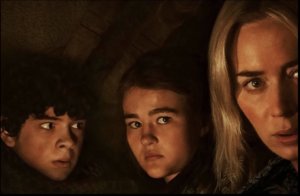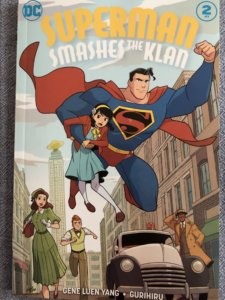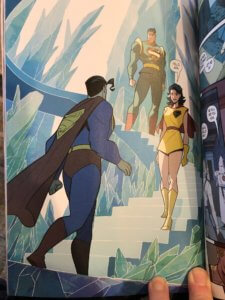Posts Tagged ‘alien’
PERELANDRA, A Review
PERELANDRA is the second installment in CS Lewis’ space trilogy. Below is my no-spoiler short review, but the longer review that follows the image of PERELANDRA’s cover, will contain spoilers…beware. This is not a children’s book, but I recommend this novel to all ages who like the story. For all readers, taking the time to discuss after or along the way will deepen philosophical and theological understanding.
Link to OUT OF THE SILENT PLANET for a review of the first book in the trilogy.
5 Reasons to Read PERELANDRA, A Classic Science Fiction Story
- One of the more unique portrayals in literature of paradise and/or a pre-fallen world
- Beautiful CS Lewis prose
- The ideas are put forward clearly and by someone well acquainted with 20th century ideas
- Finally…a strong female character (there were none in the first novel)
- Read all three to make sense of what Lewis was trying to accomplish in the longer narrative arc
3 Reasons PERELANDRA is My Least Favorite of the Trilogy
- There are so few characters and the villain does not arrive until about 1/3 of the way into the book
- Not a lot of drama…there is a slow build and eventually, high drama, but it takes the novel a while to arrive (see #1)
- A lot of speech-making in the final pages. Interesting ideas, but coming at me in my least favorite non-dramatic package
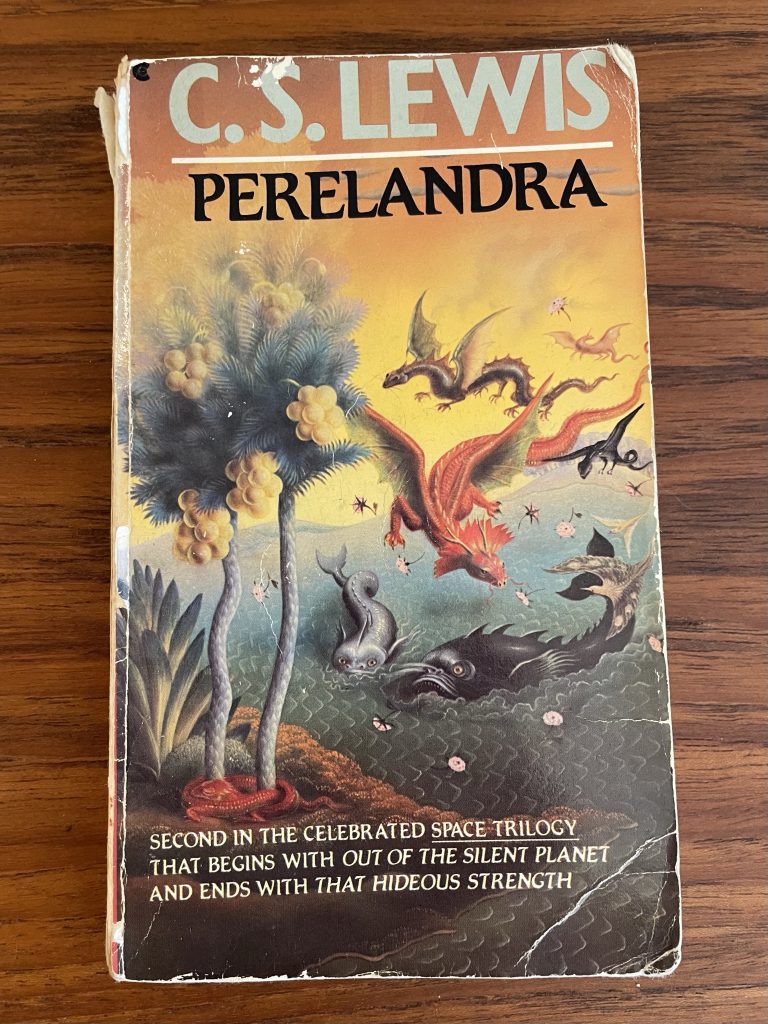
The Longer Review (With Spoilers)
While PERELANDRA is my least favorite of the three books Lewis wrote in the scifi genre, it does have its merits.
For one, anyone who has read his Narnia books, knows how well CS Lewis puts his imagination on the page. He has the ability to create a world both strange and fabulous and took on a bold task to put before the reader a paradise, a pre-civilization and pre-fallen planet with only two human-like people. Basically, he created an Eden. And how would one write this in a convincing way?
This excerpt, one of many examples…just gorgeous.
Now he had come to a part of the wood where great globes of yellow fruit hung from the trees–clustered as toy-balloons are clustered on the back of a balloon-man and about the same size. He picked one of them and turned it over and over. The rind was smooth and firm and seemed impossible to tear open. Then by accident, one of his fingers punctured it and went through into coldness. After a moment’s hesitation, he put the little aperture to his lips. He had meant to extract the smallest experimental sip, but the first taste put his caution all to flight. It was, of course, a taste, just as his thirst and hunger had been thirst and hunger. But then it was so different than any other taste that it seemed a mere pedantry to call it taste at all. It was like the discovery of a totally new genus of pleasure, something unheard of among men, out of all reckoning, beyond all covenant. For one draught of this on earth wars would be fought and nations betrayed.
Elwin Ransom, a professor of philology, is the narrator here. He was also the protagonist in Out of the Silent Planet. In this excerpt, he is telling his tale to a fictionalized version of CS Lewis after returning from his mission to the planet Perelandra. Ransom was sent to Perelandra by the angelic ruler of Mars (Malacandra). The reader is acquainted with this ruler from the previous book. In Out of the Silent Planet, Ransom is kidnapped and brought to Malacandra. That is where he meets Oyarsa, the ruler of Mars. Oyarsa does make an appearance in this novel, as does Weston, one of the academics who kidnapped Ransom in the first story. Weston, the primary rival to Ransom, acts as the tempter in this narrative. He does this not by his own cleverness and strength, but by something more frightening. Weston has given himself over to the bent angelic ruler of Earth, Satan. After Weston arrives on Perelandra in his space vessel, Ransom comes to understand his mission, that he has been sent to thwart the bent Oyarsa by thwarting Weston.
In the story, Weston is an academic with the worst intellectual vices; hubris combined with a flamboyant humanism that borders on narcissism. Tragically, he falls under a true evil in his search of spiritual answers to the mysteries he experienced on Malacandra. Weston’s journey into evil reads like something out of a horror novel (or the Bible).
“Idiot,” said Weston. His voice was almost a howl and he had risen to his feet. “Idiot,” he repeated. “Can you understand nothing?…This is the old accursed dualism in another form. There is no possible distinction in concrete thought between me and the universe. In so far as I am the conductor of the central forward pressure of the universe, I am it. Do you see, you timid, scruple-mongering fool? I am the Universe. I, Weston, am your God and your Devil. I call the Force into me completely…”
Then horrible things began happening. A spasm like that preceding a deadly vomit twisted Weston’s face out of recognition. As it passed, for one second something like the old Weston reappeared–the Old Weston, staring with eyes of horror and howling, “Ransom, Ransom! For Christ’s sake don’t let them—” and instantly his whole body spun round as if he had been hit by a revolver-bullet and he fell to the earth, and was there rolling at Ransom’s feet, slavering and chattering and tearing up the moss by the handfuls…
I was in my thirties the last time I read PERELANDRA and I did not remember how clearly this Weston character gives himself over to evil. Nor did I remember that Ransom comes to the realization that he will have to destroy Weston in hand to hand combat if he is to defeat him.
That Ransom believes he must assassinate his rival provoked my horror. Moreover, the scenes of his battle with Weston are brutal. Lewis does not hold back on that reality, but the idea of this existential battle brought to mind Dietrich Bonhoeffer. Lewis might never have known Bonhoeffer personally, but the ideas Bonhoeffer was writing about and preaching about (in Hitler’s Germany) were likely familiar to him…as they were to every thinking Christian of the time.
Bonhoeffer, while struggling to be a faithful clergy member under Nazi rule in Germany, came to terms with the idea that it was in fact a righteous or just act to kill a man who had fully given himself over to evil. That is why Bonhoeffer was executed in the end, as he played a role in an assassination attempt against Hitler. Below is an excerpt of a sermon on Colossians 3:1-4, a sermon he gave most likely after he had made the decision to collaborate with a part of the resistance determined to assassinate the Fürher.
“Instead, and precisely because our minds are set on things above, we are that much more stubborn and purposeful in protesting here on earth… Does it have to be so that Christianity, which began as immensely revolutionary, now has to remain conservative for all time? That every new movement has to blaze its path without the church, and that the church always takes twenty years to see what has actually happened? If it really must be so, then we must not be surprised when, for our church as well, times come when the blood of martyrs will be demanded. But this blood, if we truly have the courage and honour and loyalty to shed it, will not be so innocent and shining as that of the first witnesses. Our blood will be overlaid with our own great guilt.” (DBW 11, 446) (Schlingensiepen, Kindle Location 2427)
Bonhoeffer’s words evoke the idea that a conservative church is potentially an anemic one. His mention of our great guilt in the sermon I took two ways. One, the church is guilty when it does not act (or waits too long) to stand up to evil. Two, if it does join the revolutionaries, it potentially falls under the guilt of questionable acts. When evil can only be defeated by an act that lays outside of the norm of Christian ethics, there is plenty of guilt to go around. However, Bonhoeffer did not shrink back from taking on that guilt for what he (and history) thought to be the greater good. Moreover, his writings on this remain strong pillars in just-war theory and the Christian struggle with realism versus pacifism.
Lewis travels a similar line of reasoning in this novel and it should not surprise the reader that when the character Ransom leaves the planet Perelandra, he leaves having accomplished his task, but with a wound on his foot that refuses to heal this side of heaven.
THE SILENT SEA, More Brilliance From the Korean Film Industry, A No-Spoiler Review of the Netflix Miniseries
First, the Short Review
6 Reasons I Recommend THE SILENT SEA
- Beautiful production overall, including visuals that underlie the creepy vibe
- Featured a number of my favorite Korean actors, a few you might recognize if Squid Game was on your watch list this past year
- Plenty tension and surprises/frights
- A number of science fiction and haunted house tropes embedded in the story and various characters (see more in longer review)
- The relationships and particularly, the relationship to authority feel authentically Korean. (also, see longer review)
- You know I love the miniseries genre, 1-hour installments of great storytelling that comes to a conclusion without an agonizing cliffhanger
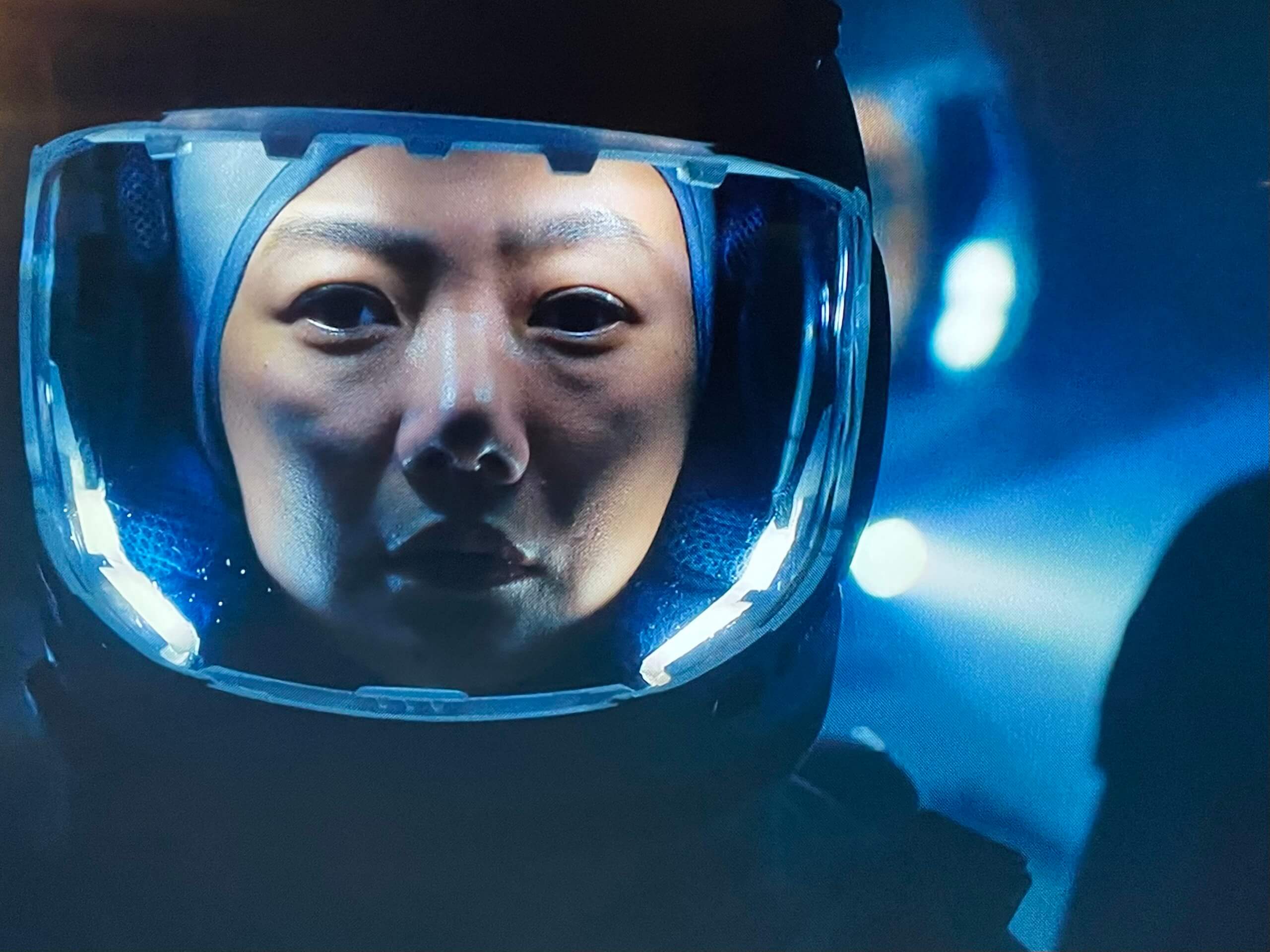
Longer Review
SILENT SEA is the story about a mission to the moon to find water. I rate this series PG-13. No sexual content in this production, but there are dead bodies, and some gore. Family-friendly if your teens are mature. It’s a fun, suspenseful ride.
The first episode quickly gives the viewer the high stakes for this mission. Drought has plagued the Earth. Water is the resource most valuable and due to its scarcity, the planet has become a wasteland. Water is rationed to such a degree, many have suffered physically, billions have died. The wealthy nations have gone into space to find a water source. Most abandoned the idea of finding water on the moon after searching, but the South Korean government kept snooping. There has been a top-secret program at a large moon station that was believed to have borne fruit, but suddenly…the experiment falters. Everyone dies all at once on the moon station. The earthbound directors, including Heo Sung-tae (pictured near end of review) initiate another mission to go to the station and investigate the truth, but secrets pulse underneath the surface of this mission and become one aspect of tension in the story. The authorities hold their cards close and the military and science leaders do not push back, though they suspect something fishy. This may or may not be an aspect of Korean-specific deference to authority, but the screenwriter exploits what I understand as deference in a way that serves the story. Also, this is where the nuanced acting plays such a powerful role in the unfolding of the narrative. The audience can see in the face of Bae Doona, the slight suggestion of twitch, a blink, a stern jaw…we see it, but barely and it helps us know that she understands that she is being deceived. Yet, in most of the outward behavior, she acts the true soldier. Doona is great at this nuanced acting, but she’s just one, among a number of these performers, who pull off such nuance. In my mind, THE SILENT SEA showcases superb writing and better acting than Squid Game. Click for a review of Squid Game

Once the mission lands on the moon, what unfolds reminded me of Ridley Scott’s Alien, in all the best ways. Yes, there will be corpses, tunnels, darkness, betrayals, a terrible and contagious sickness, but there will be one character who keeps her eyes on the prize. Dr. Song (Bae Doona) is intent on discovering the truth. In part, she seeks the truth because her sister is one of the corpses and the holder of many of the secrets. Doona as Dr. Song, pictured above, is a female lead in the Korean zombie series, Kingdom. To see my review of Kingdom, click here
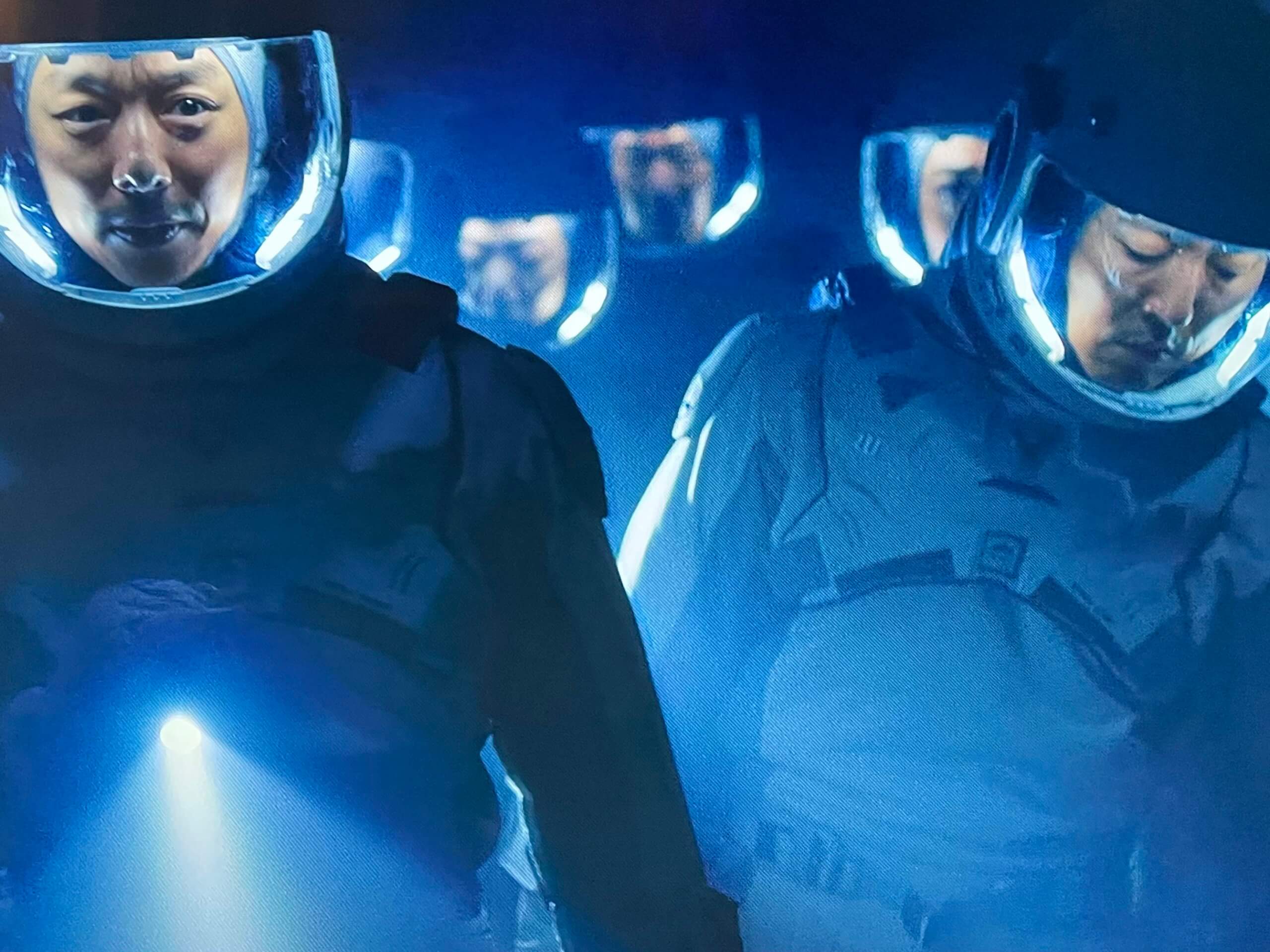
I beat this drum a lot but I do feel that Netflix streaming continues to find the best international productions and when it comes to science fiction, the Korean film/media community is putting out a lot of great product. Produced by Jung Woo-sung, directed by Choi Hang-Yong, who deftly handles the brilliant storytelling of screenwriter, Eun-Kyoi Park. Honestly, I think I could teach a five-hour course on writing with this series, moving scene by scene through the screenplay, in terms of a classic sci-fi thriller. Fun fact, this story (as did Scott’s Alien), closely follows the haunted house template. That means there are a few predictable tropes. The audience knows that the mission is doomed (at least the mission as it was originally conceived) as one by one, the team gets whittled down. Who will remain in the end…that is what the audience wonders. Regarding the various characters, the majority of them hold their own, each having his/her own arc, including the wise-cracking military scrub who just wants to go home…a longing the audience suspects will not be realized.
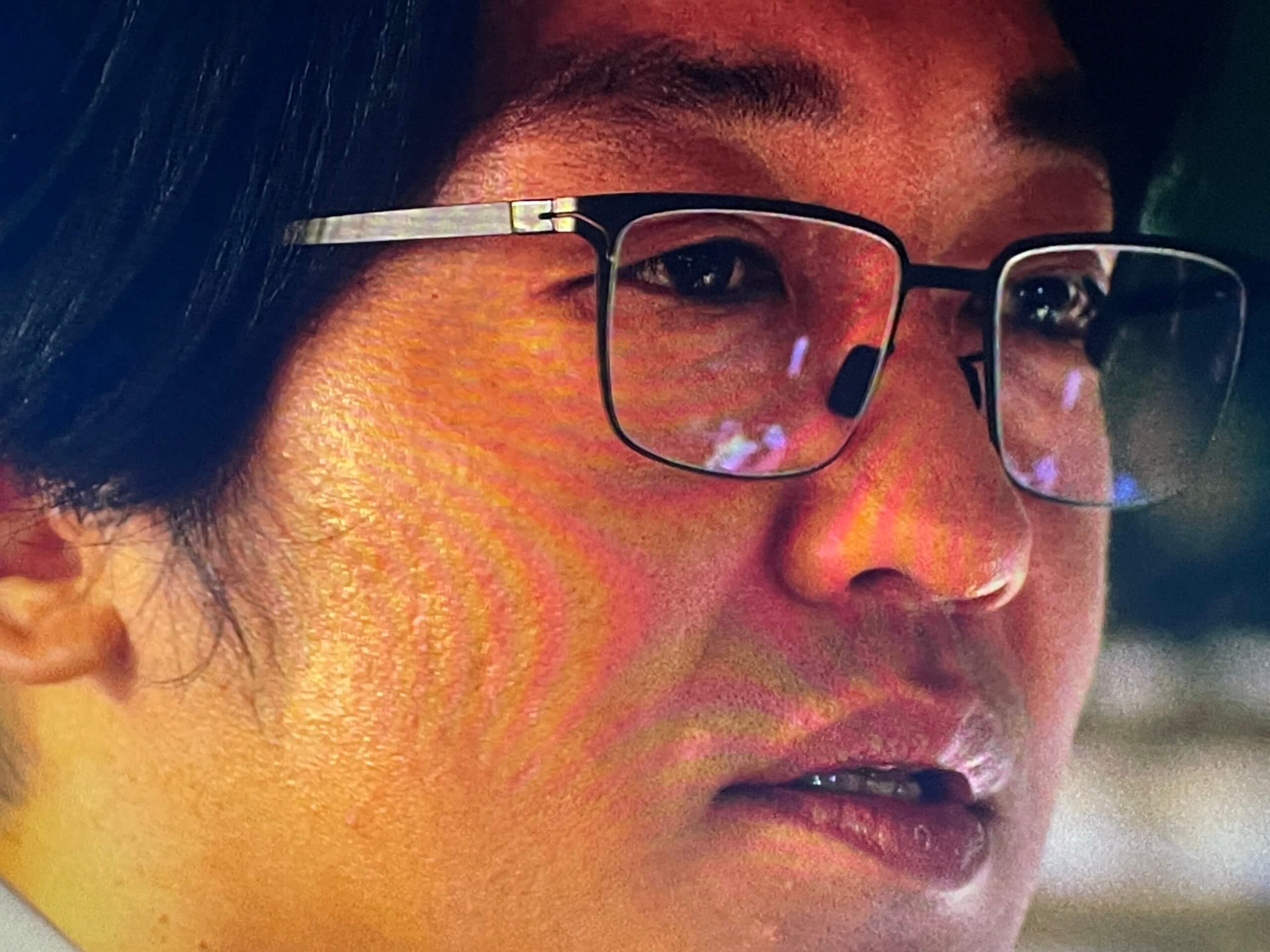
I highly recommend. THE SILENT SEA, and suspect that Netflix now has me pegged in its algorithm as a person who loves Korean-produced thrillers/sci-fi. I might need to give the Koreans their own category on my site. The product is so good, I can’t stop watching and when I watch, I always review.
DUNE Part 1, The film. A No-Spoiler Review

In a similar way that Peter Jackson pleased both the non-reading audience and the hyper fan of the LOTR books, it looks like Villeneuve will do the same for the his audience and fans of the novel, DUNE.
DUNE, the film, is the first of two. It’s only about half of the novel (yet another reason to entice your teen to read the novel), and there could be more films if Villeneuve decides to continue with the novel’s sequels. We’ll see how that goes. The later books are brilliant but probably more challenging for the average audience member to consume. Herbert’s world is a complex and mostly unhappy place on almost all counts.
First, The Short Review of DUNE
5 Reasons to See this Film, Especially if you are a Scifi Fan…
- Mostly pitch perfect and accurate (close to the novel) storytelling
- Herbert’s DUNE is a foundational work in the scifi genre and has a huge international following. AKA, without DUNE, Star Wars might never have been made.
- A vision within the story that transcends culture and era
- Great casting
- An epic visual feast
Now, for the Longer Review…
If you want to go deep, super deep on DUNE, there are papers written, blog posts and articles that speak to why the story DUNE is one that has reverberated in many cultures, especially subjugated cultures, since it was released in 1965. This article is a good one, in case you want more breadth about the history. Click on the link for the Guardian’s penetrating reflection. DUNE article, Guardian.
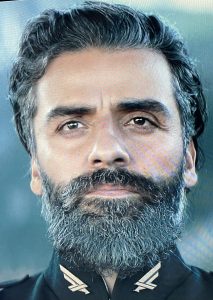
True, the viewer is only getting a third of the character depth in the film version and for that reason, I encourage all to read (or re-read) the novel. It ages well. But, even if you don’t read the novel, Paul, Leto, Jessica, Duncan, Kynes and the Fremen come across very close to the novelist’s vision. I had two observations of change that caught my attention: Villeneuve did not portray the Atreides’ mostly male in-house staff accurately in terms of their suspicion of Jessica as the betrayer. Their suspicion of the one woman in the mix comes through in the novel, not in the film. Also, the gay Baron Harkonnen is a known child predator in the novel. I can guess there are many reasons Villeneuve decided to forgo this portrayal of the only gay character in the story world. Let him be obese and disgusting in the visuals, but diminish his child predator persona. That seems like a wise decision on many fronts.
The portrayals I loved:
Arakkis, the worms, the Fremen, the sitch, the general feeling of the Bene Gesserit, the Harkonnens, the Sardaukar, the ornithopters, Arrakeen, the costumes (including the stillsuit)…these are all perfect, as are the actors’ portrayals of their characters.
Overall, DUNE was worth the money. I highly recommend this film.
A QUIET PLACE II, A No-Spoiler Review
Worthy of a trip to the movie theater. I say yes!
A QUIET PLACE II was the first film I watched in a theater after receiving the COVID vaccine. It was a joyous occasion on many levels and worth a trip to the theater. The suspense and scare moments are best viewed when in a large, dark room, alongside a bunch of others who will scream in unison with you. We ventured into a theater in Madison, Wisconsin last night, our mask mandate having been lifted the day before. (Dane County has one of the highest vaccination rates in the country).
Here are 5 reasons this film is worth the price of the ticket:
- This is true scifi (in the spirit of Ridley Scott’s Alien, AKA monster versus human)
- The storytelling is intimate in the best possible way, focusing on one family scrambling to survive in a nearly impossible world
- Jump out of your seat moments, but without the extreme gore often found in the horror genre
- A longer story arc that builds tension and keeps the audience longing for more
- A dynamic deaf actress who plays a deaf character. An amazing role and an amazing performance by Millicent Simmonds
A QUIET PLACE II is rated PG-13. Mature teens could handle this if they like horror. Again…this is not gory horror, but it will likely give little tykes nightmares.
I must say, the group of us were giddy and joyful to be walking into the theater again after so many months of Netflix and Amazon Prime and Disney Plus, etc, etc, viewing by ourselves in our little hovels. The theater felt glorious and expansive.
Some economists ponder whether or not the movie theater will die as a result of our streaming habits (already in process before Covid). If last night is any indication, I would say no. Some films need to be viewed in community, and in a massive, dark space.
A QUIET PLACE II did not disappoint.
All of us in our party had see the first installment. All of us had been pleasantly surprised with the quality of the story in that first film. Always suspecting the sequel will be lame, we didn’t venture into the theaters until we heard from critics and viewers that this second film was both consistent with the vibe of the first (did not lose its heart) yet deepened the overall tension. A third installment is being shot as I write.
I highly recommend you view the first film before going to the second. Here is my review of A QUIET PLACE
You can rent this first film on Amazon Prime for $3.99.
After which I highly recommend you view the second film and be prepared for a few jump-out-of-your-seat moments and a wonderful theater experience overall.
THE ANDROMEDA STRAIN, A No Spoiler Review
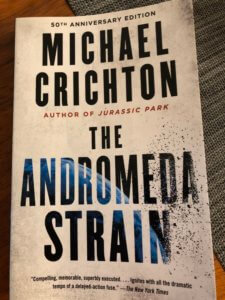
However, Crichton soon after became a best-selling author and gave up the idea of practicing medicine.
I read this novel because of a recommendation by a friend during Covid19…
Do I recommend this novel? No, I don’t and here are 5 reasons why:
- The novel puts forward an interesting premise, but not fully baked (I am pretty sure this novel would never get published today)
- Bland main characters. It’s hard to keep them straight, they all seem like the same guy (except they attended different Ivy League schools and have slightly different occupations)
- So-so tension, but nothing like one of his better books, Jurassic Park, for example
- Characters are all white dudes in lab coats and even the non lab-coat characters are all white dudes. *note…when THE ANDROMEDA STRAIN was turned into a film in 1971, the screenwriter changed one of the dudes to a female…even in the 70s the character line-up was thought to be way too monochromatic.
- Too much data and exposition and not enough heart. I felt nothing for all the people (except for the infant…who seems to be completely neglected)
Longer Review…
So…this novel became a best-seller and gave rise to a film that bears the same title. Both were hits/made a lot of money. In fact, this book catapulted Crichton’s career. I can only surmise that there was a great hunger for techno-thrillers at the time and that Crichton scratched an itch that had be itching for a long time.
The funny thing is, immediately following this read, I’m consuming Philip K. Dick’s, DO ANDROIDS DREAM OF ELECTRIC SHEEP and I am so wowed by the writing and how different it is from Crichton’s. Dick knew how to flesh out a character. Crichton did not, at least he didn’t yet. He got much better at it in subsequent novels, many of which I have enjoyed.
So, let me just nit-pick a little…
If I was ever to teach a writing class on the development of a writer…I might choose Crichton and force my class to read this book and then give them the pleasure of Jurassic Park as examples of how one gets better at the craft. THE ANDROMEDA STRAIN almost feels like a “freshman novel”, that novel written by an aspiring author who has one great idea, but can’t quite figure out how to tell the story.
In that class, I would also ask the students to read DO ANDROIDS DREAM OF ELECTRIC SHEEP, by Philip K. Dick, written in the same era.
There is a reason that BLADE RUNNER, a brilliant film and subsequent franchise, emerged out of Dick’s novel, published in 1968, one year before THE ANDROMEDA STRAIN.
The character of Rick Deckard is brilliantly written, fleshed out. The reader feels his pain, his angst, his story as he/she reads. Not only that, the secondary characters are complex, mysterious and full of emotion even when Dick writes about androids. His androids seem more human than Crichton’s actual human characters.
I do believe that Crichton saw his errors and improved immensely, but it will be a mystery to me for a long time that this book, THE ANDROMEDA STRAIN, was published and was sold and was read by so many, including me!
If for some reason you want to buy this book, click here.
To watch the film via Amazon Prime, click here.
ALIEN: What Would Ripley Do? A Re-Watch During Covid Quarantine
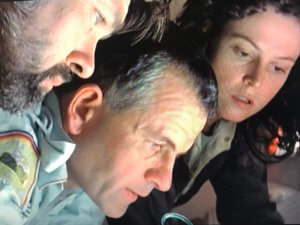
Five Lessons Ripley Can Teach Us About Living with a Hidden Enemy
- Be on guard at all times. The “man” the “government melded with the corporation” is always trying to pull one over on ya…so be wary.
- Take care of your own team (including yourself). The bad guys will infiltrate your team, your mind and your spaceship and they lie real good…they will lull your people into passivity and then STRIKE.
- Let go of sentimentality and fight till the end. Some of your team will fall. Hell, you might even fall, but that doesn’t mean you can’t still fight. Do not give up.
- Kill the demons…never, never, never give them an inch. They feed off you and will take advantage of any weakness you exhibit. They deserve no mercy, so don’t give them any.
- Always keep the goal in mind. Your survival and that of humanity is the goal, do not waver, do not let down your guard
Confession, before I write anything else, I have to say…I love Ripley and not just because Sigourney Weaver graduated from my alma mater and starred gorgeously in the original two Ghost Buster films. I love her for her character in the Alien franchise. I love Ellen Ripley because though she is that suspicious babe you wish would go away most of the time, you def want her on your team when the going gets tough. She always chooses humanity, always chooses moral good, even when it costs her everything.
If you have the stomach for it in this season of quarantine, re-watch the original ALIEN. The creature in the film is modeled after this parasite and not a virus, however, the fear of contagion is palpable and gripping (We can relate).
The ALIEN screenplay, for those who love the genre, resembles the haunted house narrative. Enclosed in a house (in this case, a spaceship) the members of a routine haul (AKA…this crew is made up of blue collar haulers) must battle an enemy determined to consume and hide. Many of the emotions parallel our current quarantine, so if you think it will help you process and release steam, watch Ripley kick ass and conquer.
When Science Fiction Brings History Alive
I love science fiction, dreaming about the future, imagining what our life in outer space might look like someday, but my passion for the genre has as much to do with the past as it does with the future. Science fiction shows us the future but also has the ability to teach us about our past and often does so without the baggage of politics and biases. The stories below are launch pads. Their portrayals of history through story are not by any means comprehensive, but rather snapshots into the lives of people encountering challenges that may be imagined by the author, but mirror history.
Here are a handful of scifi stories that bring the reader face to face with the past:
- Superman Smashes the Klan
- The Man in the High Castle
- Colony
- An Excess Male
- Kindred
History Lesson #1. SUPERMAN SMASHES THE KLAN. Launch a discussion about the Ku Klux Klan (it’s inception and impact on US race relations).
In this three-issue Superman Comic, Gene Luen Yang gives historic tidbits at the end of each issue. You can read my review of the series here.
In issue 1,Yang highlights the 13th amendment to the constitution (abolition of slavery) and the 1882 Chinese Exclusion Act
Following issue 2, Yang discusses the Jewish immigrants who created Superman.
Following issue 3, Yang discusses the challenges of his own parents, both of whom were immigrants from Taiwan
History Lesson #2. Watch or read, THE MAN IN THE HIGH CASTLE (book by Philip K. Dick. The Amazon Prime TV series was produced by Dick’s daughter, Isa Dick Hackett). Discuss and learn about World War II.
This series is a great way to understand the Axis powers and that tentative alliance that almost took over the globe. You’ll find yourself or your student understanding the world that was inhabited by those who lived under occupation during that war. The French, The Koreans, and many others were forced to survive under Nazi or Japanese rule. Some made compromises, others rebelled. Can you imagine who you would have become to survive an occupation? That question is a great way for students to enter into and understand history.
History Lesson #3. Watch COLONY on Netflix to begin to grapple with the reality of living under occupation.
In the case of COLONY, the true enemy is an alien race that has invaded Earth, but some of the darkest villains are the human beings who have allied themselves with this conquering force.
Living under occupation, whether under the Greeks, Romans, The Islamic Caliphate, the Brits, the USSR, it requires turncoats, or those who will help to subdue the masses for the sake of the little bits of power and privilege that are doled out by the occupying power. The tv series COLONY does an amazing job of capturing this reality. A longer review can be found here.
History Lesson #4. Read AN EXCESS MALE, by Maggie Shen Chen, to begin to understand 20th century Chinese history.
Although this book imagines a future China, this story highlights what is perhaps the most disastrous public policy mandate of all time, THE ONE CHILD POLICY. For my review of this novel, click here. To read my guide for educators, click here.
History Lesson #5. KINDRED, by Octavia Butler. Read this book (fictional) and one of the other historic slave narratives like, MY LIFE AS A SLAVE, by Frederick Douglass. Discuss the ways slavery dehumanizes all those who participate in its reality.
KINDRED, by the late and great Octavia Butler, gives the reader a taste of the slave-inhabited South of yore. The brutality is evident and palpable. Lessons are brought so close…it’s hard to read this book, yet it is valuable for those trying to understand slavery in 18th and 19th century US. Here is my longer review of Kindred
SUPERMAN SMASHES THE KLAN ISSUE 3, A Review Without Spoilers
Read All Three Issues of SUPERMAN SMASHES THE KLAN You Won’t Be Sorry
 Short Review: Here’s why you need to read all three…
Short Review: Here’s why you need to read all three…
- Comic book action and a great story
- Relatable kid characters who make poor or good choices and learn from them
- Even Superman grows and changes
- History lesson combined with Gene Luen Yang memoir tidbits in the final pages of each issue are perfect for spurring deeper conversations about racism in the US
- I can’t get enough of Gurihiru’s lovely art
Longer Review:
It’s a sad season for many of us on planet Earth who are living under the threat of COVID19 spread. Schools have been shuttered, so many activities cancelled and parents are left trying to figure out how to keep their kids off screens and at least somewhat engaged in their education. Great books, ones your kids will be motivated to read without any of your coaxing, are the home-school parent’s best friend.
On my website, you can use the menu bar for educators to see what science fiction books might appeal to your student. It’s not an exhaustive list, but there are more than a few gems you’ll want to check out. When I review a book, I give the story a movie type rating…G, PG, PG-13, etc.
If you want to read a review of issue 1 of this series, click SUPERMAN SMASHES THE KLAN, A No Spoiler Review
If you want to read a review of issue 2, click here
In the case of issue 3, I have no reservations in recommending this book to all kids and adults, though you might give it a PG rating for the serious topic it tackles, racism and violence.
The story (as portrayed in all three issues) is accessible to a child. He/she might need to be old enough to engage in a basic conversation about race, justice and belonging, but my experience in having two kids who attended public schools in California, they were ripe for the beginning of that conversation by kindergarten. I would recommend you don’t shield your young ones from starting this conversation early.
In this third issue of SUPERMAN SMASHES THE KLAN, the story climaxes with a confrontation between Superman and the Klan of the Fiery Cross. Superman has befriended the Lees, an Asian American family that has moved out of Chinatown and into the suburbs. They are the focus of the Klan’s animosity and Superman is defending them against the Klan’s violence. Author, Gene Luen Yang does not pull punches. There is a real portrayal of race hatred in this comic series, but that is what makes this story all the more powerful…it delivers truth.
Roberta, the young sister in the Lee family plays a crucial role in helping Superman beat back injustice. She will appeal to both girls and boys with her quirks (in the opening sequence of the first issue, she gets car sick and has to throw up while her family is driving out of Chinatown) and her bravery (she confronts evil and injustice head on, even though she can’t always defend herself). In this issue, Lois Lane takes Roberta under her wing and encourages her to research a mystery for the Daily Planet as a cub reporter. Roberta is a wonderful hero.
Given the talented writer that he is, Yang draws out a number of characters on both sides of the conflict who have depth. The bad guys are more than just foils. Likewise, the good guys are not always perfect. Even Superman is grappling with flashbacks around his own childhood, trying to make sense of his alien nature. It’s one of a number of great storylines that will please the Superman fanatic and add much to the themes that emerge in SUPERMAN SMASHES THE KLAN.
A bonus delight in all the issues are the final pages where Gene Luen Yang puts forward a bit more history of his own immigrant story and that of the Klan…In a vulnerable and testimonial way, he reflects on both the challenges and the beauty of our mixed cultural nation.
SUPERMAN SMASHES THE KLAN is a story in three issues. One issue every other month released since October. This is something comic book readers understand. You buy one issue, read about your favorite hero and wait in anticipation for the next issue to come out. Comic book adventures are serial-styled stories. Each comic book usually contains one story arc and always ends with a cliffhanger. That is one reason why readers buy the next issue. There is delight in this way of consuming a story, but it requires more patience than most of us are used to.
In case that style does not appeal to you or your child, buy all three. All three SUPERMAN SMASHES THE KLAN issues contained in one book, a story that will grab your child and keep him or her reading. The three will be released together on May 12. To preorder the story in one paperback instead of 3 separate issues, click here.
My advice in case you plan to discuss race with your child, make sure you read the story too. The education that will come out of the reading will benefit parent and child.
To buy SUPERMAN SMASHES THE KLAN, ISSUE 3, click here.
To buy the previous issues, click
SUPERMAN SMASHES THE KLAN, Part 2
SUPERMAN SMASHES THE KLAN Part 2 hit comic book stores in December. It’s over a month old and I have been delinquent in reviewing it, until today. This story is appropriate for just about all readers. Rated PG.
For a review of Part 1, see this no spoiler review
Warning: This review will have spoilers if you have not read the first installment.
Inspired by the 1940s radio series Clan of the Fiery Cross, Gene Yang picks up the cliff-hanger from part 1. In part 1, Tommy Lee, a Chinese-American boy has been abducted by a white supremacist group, Klan of the Fiery Kross.
The aim of the Klan is to tar and feather Tommy, therefore teaching his parents a lesson. They resent the Lees moving out of Chinatown and into their white neighborhood. The Lee family has made this move because Dr. Lee, Tommy’s father, has been offered a job in a nearby lab.
All the storylines ratchet up a notch in Part 2.
Worth noting:
- Superman backstory: Superman continues to have flashbacks of his parents, aliens who look very different than humans. He is grappling with his own “alien” identity. His journey parallels the journey of the immigrants and their children in the story
- A little bit of romance: Yes, it’s a bit comedic and fun to see the budding affection between Superman and Lois and a little flare between Jimmy and Roberta, the main character in the story, the Lee’s spunky daughter.
- A community undergoing change: Yang captures an aspect of American life that rings true…especially, second generation immigrants moving out of the inner cities, out of enclaves and integrating into white America, changes that have historically led to tension. As in Part 1, Yang treats the “bad guys” fairly, always grappling with their feelings and their perspective. Not excusing their views or actions, but giving all his characters humanity.
- Another history lesson/bio on race relations in the US: At the end of the comic, a memoir section called Superman and Me describes Gene Yang’s childhood relationship with Superman and other comic heroes. Underneath Yang’s love affair with comics is the power of story and how they provided a sense of identity and empowerment for the author. In case you’re enamored by the history lesson, consider Yang’s early graphic novel masterpiece, American Born Chinese Definitely worth owning and passing around to friends, especially young teens.
Overall, this is a great middle to the story. I look forward to reading the finale, Part 3 when it is released on February 19, 2020.
A note on the art: The art in the series, created by Gurihiru, is colorful, capturing a blend of retro and anime. It seems apropos that this Japanese female duo would create the artwork for a comic grappling with some of the first Asian-American characters portrayed in a sympathetic way in the American Comics Universe.
To buy Part 1, click here
To buy Part 2, click here
WHY MANDALORIAN? No Spoiler Review of Season 1
So, yes…our family is following the trend. We viewed the much talked about THE MANDALORIAN this past holiday vacation. If you count the fact that we (my husband and I and our two kids in their twenties) actually plunked ourselves down in theater seats and watched the new Skywalker film, our eyeballs were largely captivated by the Star Wars universe.
A big win for Disney because I’m guessing we weren’t the only family doing this.
THE MANDALORIAN is a PG-13 show. Don’t let cute child Yoda-like character charm you into thinking this is for little kids. Many of them will be terrified by the series, in part because the cute little character is often in danger.
There is also graphic violence in the series. The main character, Mando, is a bounty hunter in the spirit of Jango/Boba Fett.
First, The Short Review: Five Reasons to Watch THE MANDALORIAN
- Similar to Stranger Things, this series is turning out to be an international phenomena. If you don’t watch it, you’re bound to miss about 1 out of every 5 late-night tv jokes and tons of cultural references.
- The production is well done overall, including the special effects.
- Each of the 8 episodes are action packed and tension filled.
- Baby Yoda (this isn’t actually baby Yoda, but a child of the same species as Yoda) is adorable.
- The story helps to expand and fill out the Star Wars universe and that is kind of fun if you have enjoyed the previous stories.
 The Longer Review…
The Longer Review…
The story and the main character evolve in this production. I was a little bothered by never being able to see the face/read the face of the hero, but the Star Wars film folks have genuinely figured out the best possible way to convey feeling even when a character is a robot or wears a helmet that covers the face. Speaking of helmets…one of the most delightful interactions took place between two storm troopers. At one point, they are alone and commenting on their superiors’ orders and interacting over a creature/prisoner in their possession. It’s funny and humanizing to hear their banter, though the two of them still seem bent on serving their evil overlords.
As is typical of our most beloved Star Wars tales, the protagonist adores his ship and seems to have a particularly affectionate relationship with it. Star Wars writers do a good job of making machines, like ships and droids take on personality. Droids are a sore subject with our hero. He mistrusts all of them and the story arc grapples with this view. The teaching character introduced in an early episode is called Kuiil. He not only assists Mando when our hero is in need, he represents the gentler and more peace-loving side of the universe. Where Mando can seem brutal and hard, his moral angle on the universe is expanded as the audience sees him interact with the child first and second with Kuiil.
As usual, Star Wars writers are good about villains and rogues, some of whom are weird looking aliens. Yes, there is even a bar scene right at the getgo in episode 1. In addition, the audience visits new planets, sees new creatures and encounters cultures not previously shown in any Star Wars film. This happened organically and it didn’t feel like overload to me. I appreciated the universe getting filled out in more details for the fans, all while telling a story that I cared about. Moreover, the new planets and creatures kept each episode action-packed and visually interesting.
Mando is a loner, but eventually the task of caring for the child becomes bigger than him. He needs allies and those allies are an interesting group as well, gritty and loyal to the cause. Mando’s willingness to team up with others, including a droid, reveals the character growth he has undergone.
Timeline Note:
This story takes place a few years after the Empire has fallen (post Return of the Jedi, 1983), but 25 years before the the rise of the First Order, the authoritarian regime that is firmly in control of the galaxy when Episode VII: The Force Awakens (2015) begins.
DisneyPlus Streaming Note:
If you want to watch THE MANDALORIAN, you might be able to access it illegally…these things I try not to know, but I realize it happens. If you want the legit way to watch, you’ll have to obtain DisneyPlus. Google search DisneyPlus deals and see what you can find. Our family found that our carrier, Verizon, gave the service free for a year because we have unlimited data. After one year, we pay $6.99 per month. This article in Business Insider will fill you in. We obviously took the deal.
Free is awesome, but will we re-up at the one year mark? We might, but it depends on the overall content value. Right now, our family subscribes to Netflix and now DisneyPlus. We are Amazon Prime Members and we use YouTube/Roku/Apple TV combo for lots of other content.We do not subscribe to HBO or Hulu or other subscribe options. I do try to watch Hulu shows when I fly Delta, which I do often, so I haven’t felt like I’ve missed that service. HBO would be nice, but there are only so many hours in a day and I still want to read! So…that’s it for us, for now.



